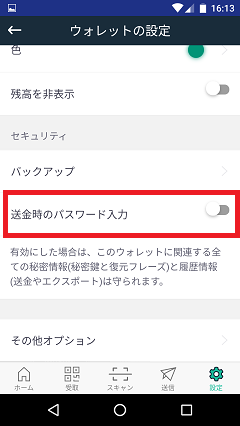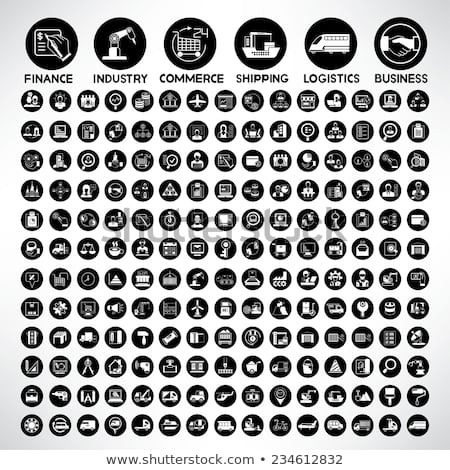
Current liabilities are defined as all expenses a business is due to pay within one year. The category can include short-term debts, accounts payable and accrued expenses, which are debits that the company has recognized on the balance sheet but hasn’t yet paid. As seen in the example above, Ashley’s Clothing Store’s quick ratio is greater than 1. It means that it has enough quick assets to cover all its current liabilities and still has more left.
However, a quick ratio of 1.12 indicates that you’ll be able to cover current expenses and debts by liquidating marketable securities and collecting your receivables. If your cash ratio is equal to 1, you have precisely enough cash and cash equivalents to cover your current liabilities. A cash ratio higher than 1 means that you have more cash on hand than current liabilities, whereas a ratio lower than 1 means that your short-term financial obligations exceed your cash.

The benefit of lumping all debts together is it’s more accessible because people outside of the company may not have access to details like when a payment is due. On the other hand, counting only very immediate debts is ultimately more accurate but can be time-consuming and less applicable over a fiscal quarter or year. Working-capital financing companies may acquire some or all of a company’s accounts receivable or issue loans using the accounts receivable as collateral. The quick ratio uses this figure rather than the current ratio to stress the company and see…
Interview with “Le Khey de la compta” – “The accountancy bro”
As both cash and accounts receivable are current assets, the total current assets stay the same and so does the current ratio. Because cash and accounts receivable are both quick assets, the total quick assets stay the same and so does the quick ratio. All told, client payments and supplier terms both affect a company’s ability to meet its short-term obligations.
Analyzing the Ambiguity: Examining Selective Insurance Group’s … – Best Stocks
Analyzing the Ambiguity: Examining Selective Insurance Group’s ….
Posted: Wed, 09 Aug 2023 04:05:12 GMT [source]
The quick ratio is a formula and financial metric determining how well a company can pay off its current debts. Accountants and other finance professionals often use this ratio to measure a company’s financial health simply and quickly. The ability to rapidly convert assets to cash can be pivotal to help the company survive a crisis. quick assets is equal to The quick ratio provides insight into your company’s ability to sell assets if needed. The quick ratio also doesn’t say anything about the company’s ability to meet obligations from normal cash flows. It measures only the company’s ability to survive a short-term interruption to normal cash flows or a sudden large cash drain.
A Beginner’s Guide to Quick Ratio
Some investors worry that the current ratio is overly optimistic and often also look at the quick ratio. Depending on the nature of a business and the industry in which it operates, a substantial portion of quick assets may be tied to accounts receivable. For example, a quick ratio of 1.2 means you have $1.20 worth of liquid assets on hand to cover every $1 of current obligations. For a company that has zero stock, like those intellectual services, the quick ratio will be equal to the current ratio! Therefore, it’s especially interesting for companies with large inventory levels – such as supermarkets for instance. One of those, the quick ratio, shows the balance between your current assets and your current liabilities, with the best result showing that current company assets outweigh current liabilities.

This also shows that the company could pay off its current liabilities without selling any long-term assets. An acid ratio of 2 shows that the company has twice as many quick assets than current liabilities. The quick ratio can also be contrasted against the current ratio, which is equal to a company’s total current assets, including its inventories, divided by its current liabilities. The quick ratio represents a more stringent test for the liquidity of a company in comparison to the current ratio.
Related Accounting and Finance Skills
If you don’t have any internship or work experience that involved using the quick ratio, you can discuss any coursework or personal experiences with this calculation. For example, you can mention if you helped a family member’s or friend’s small business figure out their financial health. Your ratio can tell you how well your business can pay its short-term liabilities by having assets that are readily convertible into cash. But unlike the first company, it has enough cash to meet that supplier payment comfortably — despite its lower quick ratio. The optimal quick ratio for a business depends on a number of factors, including the nature of the industry, the markets in which it operates, its age and its creditworthiness.
It is called Quick-Ratio because it measures a business’s ability to use its available cash or “quick assets” to immediately pay off its current liabilities – debts owed within 12 months. However, the current ratio includes inventory and prepaid expenses in assets because assets are defined as anything that could be liquified within a year for the current ratio. The quick ratio, instead, focuses on very short-term, highly liquid assets, keeping inventory and prepaid expenses out. A company’s current liabilities are any immediate debts the company owes. This includes accounts payable (money owed by the company to other businesses or clients), employee wages, taxes, and payments toward long-term debts (like mortgages or loans). The quick ratio measures a company’s ability to raise cash quickly when needed.

With the same quick assets and higher current liabilities the quick ratio will also decrease. To know exactly how much it will decrease would require the exact amounts of quick assets which was not provided. The quick ratio is called such because it only measures liquid assets, or assets that can be quickly converted into cash. You will need to be using double-entry accounting in order to run a quick ratio.
What is the quick ratio?
There may be a need for further investigation as there is a probability that the accounts payable will have to be paid before the entire balance of the notes-payable account. Furthermore, Company ABC has fewer wages payable, which is the liability most likely to be paid in the short term. Unless a large number of its customers pay what they owe within 10 days, the company won’t have enough cash available to meet its obligation to the supplier — despite its apparently good quick ratio.
These ratios evaluate the ability of the company to generate enough cash to pay off all debts should the debts become due at once. The quick ratio, also called an acid-test ratio, measures a company’s short-term liquidity against its short-term obligations. Essentially, the ratio seeks to figure out if a company has enough liquid assets (cash or things that can easily be converted into cash) to cover its current liabilities and impending debts. A key point to note, though, is this isn’t a test to see how much debt a company has or if it could seek financing to cover any current debts. Rather, the quick ratio just looks at whether a company’s liquid assets outnumber its liabilities. The quick ratio also known as the acid-test ratio is a type of liquidity ratio that evaluates the company’s ability to meet its short-term liabilities with its most liquid assets or near cash.
- A quick ratio that is equal to or greater than 1 means the company has enough liquid assets to meet its short-term obligations.
- Calculating the quick ratio is a better method when considering the ability of the company to settle its debt in the next 90 days.
- The quick ratio is an important measure of the company’s ability to meet its short-term obligations if cash flow becomes an issue.
- Quick assets are used in calculating the quick ratio or the acid-test ratio, which is a measure of the liquidity of the company.
To calculating the Quick Ratio you compare your current assets with your current liabilities, excluding inventory. You would not include prepaid insurance, employee advances, and inventory assets since none of those items can be quickly converted to cash. You can find the value of current liabilities on the company’s balance sheet. A high quick ratio is an indication that a company is utilizing its short-term assets effectively to meet its financial needs. Looking at just the cash ratio, you might think that your business would be in trouble since you only have $0.54 in cash for every $1.00 of current liabilities. In particular, businesses that move their stock quickly (such as grocery stores) might have a low quick ratio after subtracting inventory but still be able to pay off short-term liabilities.
Prepaid expenses, such as subscriptions and insurance, are considered current assets. However, they’re excluded from the quick ratio formula because you can’t use them to pay off current liabilities. The current ratio and the quick ratio should be used along with other financial ratios. Most importantly, it is necessary to understand what part of the company’s financials is excluded or included in the financial ratio used in order to understand what the ratio interprets.
- The most important step in the process is running your balance sheet, since you will be pulling all of your numbers from the balance sheet in order to calculate the quick ratio.
- Adam Hayes, Ph.D., CFA, is a financial writer with 15+ years Wall Street experience as a derivatives trader.
- It also increases the company’s chance of getting loans, as it shows creditors that it is able to handle its debt obligations.
- The quick ratio is called such because it only measures liquid assets, or assets that can be quickly converted into cash.
- For example, you can mention if you helped a family member’s or friend’s small business figure out their financial health.
- If current assets are 200 and current liabilities are 100, then the ratio would be 2.0 and the company could be described as having $2 of current assets for every $1 of current liabilities.
Quick assets are current assets that can presumably be quickly converted to cash at close to their book values. The current ratio also known as the working capital ratio is a type of liquidity ratio that measures the company’s ability to pay its short-term or current liabilities with its short-term or current assets. This ratio evaluates how a business can maximize the current assets on its balance sheet to pay off its current debt and other payables. Quick assets refer to assets owned by a company with a commercial or exchange value that can easily be converted into cash or that are already in a cash form. Quick assets are therefore considered to be the most highly liquid assets held by a company.
The term ‘acid test’ is slang for a quick test created to produce instant results. This ratio is called a quick ratio because it indicates the ability of the company to immediately use its assets that can be converted quickly to cash (near-cash assets) to settle its current liabilities. The acid test ratio measures the liquidity of a company by showing its ability to pay off its current liabilities with quick assets. If a firm has enough quick assets to cover its total current liabilities, the firm will be able to pay off its obligations without having to sell off any long-term or capital assets.
QUICK RATIO FORMULA
Other important liquidity measures include the current ratio and the cash ratio. Companies should aim for a high quick ratio because it can help attract investors. It also increases the company’s chance of getting loans, as it shows creditors that it is able to handle its debt obligations. The second formula starts with your current assets (CA) and subtracts those that aren’t considered quick assets.
Contrary to other kinds of assets, quick assets comprise economic resources that can be quickly converted to cash. However, it’s essential to keep in mind that the quick ratio, while valuable, does not paint a complete picture of your financial situation since it doesn’t take into account your industry or business model. In order to know which of these companies is in a more liquid, solvent position, we may have to calculate the quick ratio of both companies. Here’s a look at quick ratio vs current ratio differences, how they are calculated, and their similarities.
Zacks Research Weighs in on Freeport-McMoRan Inc.’s Q3 2023 … – MarketBeat
Zacks Research Weighs in on Freeport-McMoRan Inc.’s Q3 2023 ….
Posted: Wed, 09 Aug 2023 07:26:44 GMT [source]
Also known as the “acid test ratio,” the quick ratio is an indicator of a company’s liquidity and financial health. If a company reports an acid test ratio of 1, this indicates that its quick assets equal its existing liabilities. A ratio higher than 1 indicates that the company’s quick assets are more than sufficient to cover liabilities. The company is fully capable of paying current liabilities without tapping into its long-term assets and will still have cash or cash equivalents left over. It gauges a company’s ability to pay its current, or short-term liabilities, with its current assets.


